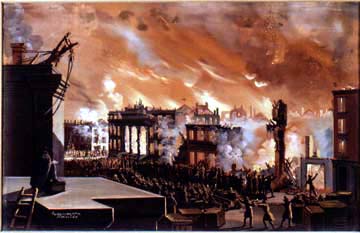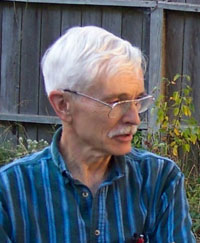Fire! Fire!
I have quoted the diary of George Templeton Strong in previous posts and would now like to offer, as an early Christmas present, two of Strong’s descriptions of fires. He loved to go to fires and was a great connoisseur of fires and his writing about them is truly eloquent.
April 16, 1840. . . . Quite a respectable fire in Water Street near Old Slip at five o’clock. Saw the new Philadelphia engines in action. They are cumbrous, unwieldy things with their two ranks of pumpers (like a double-banked galley), but they throw glorious streams of water, and throw them with ease, over the roofs of the highest stores. I suppose they require each about thirty men, and probably two ordinary engines to keep them full. This was a dry-goods store, and all of it that wasn’t burnt must have been soaked by the Philadelphia deluge. .
December 29, 1842 It was snowing when I got out at eleven and there was a great fire burning downtown, and never was anything more splendid than the effect it produced. The whole sky was lit up with a bright soft crimson and roofs were all tinted with the same color. It had a most magnificent and unearthly appearance. I was told the fire was in Wall Street and started off on a run, expecting to find the office on fire and the old gentleman wringing his hands in front of it. The snow was deep and my run soon subsided into a trot, and then I took the first cab I could find and came downtown. Found that the fire was on Water Street, five or six stores blazing, and a fine sight it was. It was the worst fire we’ve had for a long time. The wind was very strong at N.E. The engines were retarded by the snow—the hydrants were many of them frozen—and at one time the fire crossed both Maiden Lane and Water Street, but it was checked in that direction. The walls kept each other up for some time but at last one gave way, and then four or five large stores came thundering down with a prolonged roar that seemed to shake the ground, and the change from the blaze and brightness of active conflagration to smothering smoke and comparative darkness, only lit up by a perfect hailstorm of sparks and cinders, and then to see great masses of thick smoke light up as the flames rose again among the ruins and eddy round and sweep off before the northeast wind till the glare of the burning buildings was fully displayed again, was very fine.
[The picture is of the great New York City fire of 1835)

 Christopher L. Webber
Christopher L. Webber